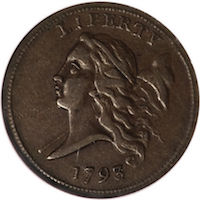
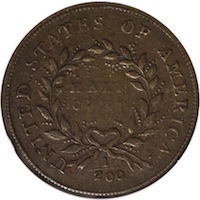
Along with the large cent, the half cent was one of our original coins dating to 1793. At the time of circulation, their value was close to the value of our modern dime. However, they were never popular, and were generally minted in much smaller quantities than the large cent. During the first year, there was fewer than one half cent minted for every 100 citizens. In the 1850's (the final decade for the half cent), the ratio was the same. The half cent could never serve the needs of the public. It was unusual for anyone to ever get one in change.
Taxation and the US mint
In 1791, the federal government exerted its authority on monetary policy by authorizing George Washington to establish a mint (thus ending coinage by states) and by imposing a whiskey tax. In 1794, farmers in my home state of Pennsylvania rebelled against the tax and were quelled by federal troops. It is in this environment that the minting of US coins began.
Who designed the first half cent?
It has not been established who designed the first half cent, which is from 1793 with the head facing left. It had been thought to be Adam Eckfeldt, whose main contribution to numismatics was saving the best specimens of coins as they were minted and preserving them for future use. Modern numismatic scholars feel that the designer was more likely to be Joseph Wright. However there is much doubt on that.
Liberty changes direction
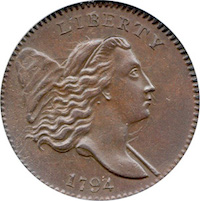
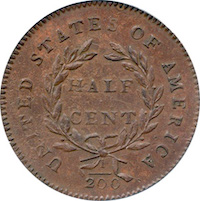
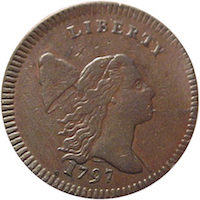
Other half cent designs
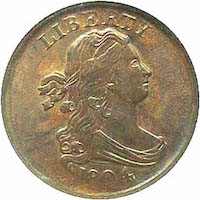
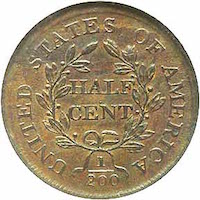
The other early designs for the half cent include the draped bust (1800-1808) and the classic head. The last regular issue of the draped bust coin was 1835,although proofs were struck in 1836.
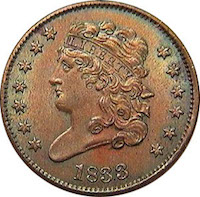

The Liberty Coronet Cent
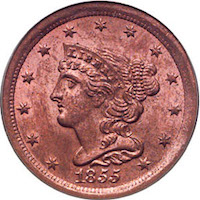
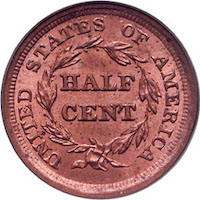 After 1835, there was a large gap with no half cents struck for circulation. During this time, many businesses minted their own copper tokens.
Regular issues of half cents did not resume until 1849, with the Liberty Coronet Cent.
After 1835, there was a large gap with no half cents struck for circulation. During this time, many businesses minted their own copper tokens.
Regular issues of half cents did not resume until 1849, with the Liberty Coronet Cent.
Liberty Coronet Proof Coins
Proof coins of the Liberty coronet series exist dated 1840 to 1849. These coins are referred to as original (distinguished by larger berries on the reverse) and restrikes. Although the restrikes were likely made after the so-called originals, it is likely that neither of these types were actually struck during the dates that appear on the coins. They may have been made by employees of the mint without knowledge of their director.The end of the half cent
The mintages for the liberty coronet cent were quite small. Neither the half cent nor large cent were popular. In 1857, James Buchanon signed the coin act that eliminated the half cent and large cent and intyroduced the small cent.Collecting half cents
Half cents were ignored by most collectors through the mid twentieth century. Interest in half cents started with Roger Cohen's book, AMERICAN HALF CENTS The "Little Half Sisters"More information on half cents
More information about half cents can be found in the book, Walter Breen's Encyclopedia of United States Half Cents, 1793-1857